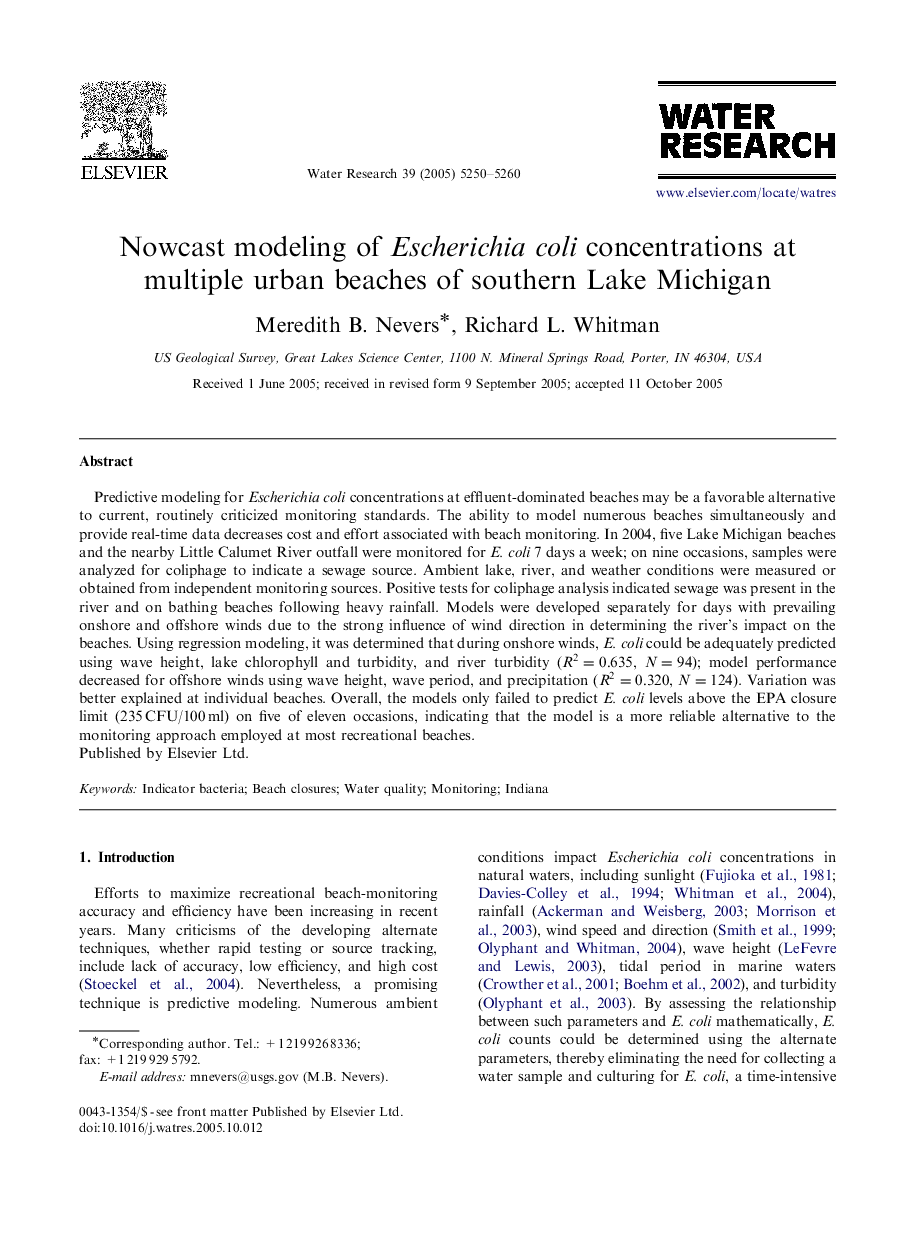| Article ID | Journal | Published Year | Pages | File Type |
|---|---|---|---|---|
| 4487497 | Water Research | 2005 | 11 Pages |
Predictive modeling for Escherichia coli concentrations at effluent-dominated beaches may be a favorable alternative to current, routinely criticized monitoring standards. The ability to model numerous beaches simultaneously and provide real-time data decreases cost and effort associated with beach monitoring. In 2004, five Lake Michigan beaches and the nearby Little Calumet River outfall were monitored for E. coli 7 days a week; on nine occasions, samples were analyzed for coliphage to indicate a sewage source. Ambient lake, river, and weather conditions were measured or obtained from independent monitoring sources. Positive tests for coliphage analysis indicated sewage was present in the river and on bathing beaches following heavy rainfall. Models were developed separately for days with prevailing onshore and offshore winds due to the strong influence of wind direction in determining the river's impact on the beaches. Using regression modeling, it was determined that during onshore winds, E. coli could be adequately predicted using wave height, lake chlorophyll and turbidity, and river turbidity (R2=0.635R2=0.635, N=94N=94); model performance decreased for offshore winds using wave height, wave period, and precipitation (R2=0.320R2=0.320, N=124N=124). Variation was better explained at individual beaches. Overall, the models only failed to predict E. coli levels above the EPA closure limit (235 CFU/100 ml) on five of eleven occasions, indicating that the model is a more reliable alternative to the monitoring approach employed at most recreational beaches.
